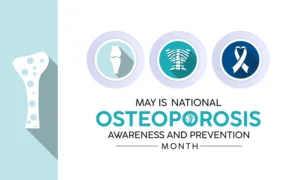National Cancer Prevention Month 2024
February ushers in a pivotal time in the fight against cancer. As the bells toll to mark National Cancer Prevention Month, we are called to action. For generations, “the big C” has loomed as a terrifying threat, cutting lives short and shattering families worldwide. Yet this disease does not have to be a hopeless monster – with awareness, change is possible.
This month highlights both the devastating impacts cancer has had and the rays of hope emerging on the horizon. Through education, screening, and supporting groundbreaking research, we can stride closer to a world where no other parent has to bury their child too soon. In this article, we will explore why prevention matters more than ever, how early detection saves lives, and the small steps each of us can take to bend the curve on cancer cases and deaths in our communities and beyond.

Cancer: Key Facts and Stats for 2024
Cancer refers to the uncontrolled growth of abnormal cells that invade healthy cells in the body. There are over 100 types of cancer each with varying causes, risk factors, treatments, and prevention strategies. Some key cancer statistics to be aware of going into 2024 include[1][2]:
- In the United States, it is projected that there will be 2,001,140 new cancer cases and 611,720 cancer deaths in 2024.
- This is the first year that the US is expecting more than 2 million new cases of cancer.
- The incidence of cancer is increasing for many common cancers, including 6 of the top 10.
- The risk of dying from cancer has steadily declined over the last 30 years, sparing some 4 million lives in the United States.
- Colorectal cancer is now the leading cause of cancer death among adults under age 50.
- The rising incidence of colorectal cancer in younger Americans is alarming.
- Cancer mortality has continued to decline, resulting in over 4 million fewer deaths in the United States since 1991.
- Cancer prevention, early detection, and treatment are important areas to address.
Awareness of the growing human and economic toll cancer takes globally is a driving force behind ongoing research into better understanding, detecting, preventing, and treating different types of cancer. National Cancer Prevention Month is a key opportunity to highlight and promote cancer prevention across communities.
Importance Of Cancer Prevention And Early Detection
Cancer prevention and early detection are absolutely vital weapons in the fight against cancer. Experts estimate that nearly half of all cancer cases and deaths in the United States each year – between 42-45% – stem from risk factors within our control, such as smoking, being overweight, drinking too much alcohol, and an unhealthy diet[4][5]. Screening tests can also help catch thousands more cancers early and potentially save those lives.
Getting diagnosed early is key to winning the battle against cancer. When caught in its earliest stages, cancer treatment is often less invasive, more likely to cure the disease, and costs less money overall. Survival rates soar when cancer is found early. For example, more than 9 out of 10 people with bowel cancer will live more than 5 years if their cancer is detected at the earliest stage[4][5][6].
Promoting healthy lifestyle choices and encouraging regular screenings should be a top priority in the war on cancer. With proper prevention and early detection efforts, we could spare countless families the heartbreak of cancer and dramatically reduce cancer’s immense burden on society.
Every life saved and every case prevented moves us closer to a day when cancer no longer threatens as many lives. We must leverage every tool at our disposal if we want to defeat this insidious disease.
Statistics related to cancer prevention and early detection include[4][5][6][7]:
- Between 30-50% of all cancer cases are preventable.
- Prevention offers the most cost-effective long-term strategy for the control of cancer.
- In the United States for 2023, 45% of the 609,820 cancer deaths estimated to occur are expected to be attributable to cancer risk factors.
- An estimated 42% of cancer cases and 45% of cancer deaths in the US are attributed to potentially modifiable risk factors.
- Approximately 30% to 50% of cancers diagnosed today could be prevented by reducing exposure to maintaining healthy body weight and receiving recommended cancer screenings and vaccinations.
- Modern mammography programs can reduce breast cancer mortality by more than 40%.
- Up to 50% of cancer cases and about 50% of cancer deaths are preventable with lifestyle changes and cancer screenings.
Top Tips for Cancer Prevention
Many types of cancer are considered preventable through lifestyle changes and proactive health screenings. Some of the top, evidence-based ways to reduce cancer risk include[6][8][9]: 1. Avoid Tobacco
Smoking remains the #1 preventable cause of cancer death – linked to 1 in 3 cancer deaths annually. Quitting smoking and avoiding secondhand smoke are among the most important ways to prevent several frequent types of cancer. Even smokeless tobacco products carry cancer risks. More resources and support are now available to aid smoking cessation. 2. Maintain a Healthy Weight
Obesity increases the risk of at least 13 different cancers, from breast and colon cancer to cancers of the pancreas, kidney, and esophagus. Aiming to stay within or work toward a healthy BMI through diet and exercise can significantly impact cancer risk over one’s lifetime. 3. Get Active
People who are more physically active have up to a 30% lower risk of two common cancers: colon and breast cancer. Meeting physical activity guidelines (at least 150 minutes per week) appears protective against cancer regardless of weight. Find ways to get more movement into your daily routine. 4. Eat a Nutritious Diet
Choosing a diet focused mainly on whole grains, fruits, veggies, lean proteins, and healthy fats can help prevent multiple cancer types. Meanwhile limiting red and processed meats, highly processed foods, alcohol, salt, and sugar intake can also lower cancer risk. Support immunity by getting enough Vitamin D and antioxidants. 5. Protect Your Skin
Skin cancer is the most common cancer diagnosed in the US and globally. About 90% of nonmelanoma skin cancers are considered preventable through practices like avoiding tanning beds, applying sunscreen daily, and avoiding sunburn. Watch for changing moles on your skin and get regular skin checks by a dermatologist. 6. Get Cancer Screenings
Detecting cancer at its earliest stages before it spreads makes treatment more effective. Talk with your doctor about the latest guidance on breast, cervical, colon, prostate, and lung cancer screening options appropriate for your age, risk factors, family history, and health status. Catching issues early on gives more treatment options. 7. Get Vaccinated
Vaccines now exist that can prevent infection from certain viruses known to cause cancer later on, like human papillomavirus (HPV) and hepatitis B virus (HBV). HPV causes the vast
majority of cervical and anal cancers. The HPV vaccine is recommended for girls and boys aged 9-12. Protect yourself and your kids!
Pursuing just 2 or 3 of these evidence-based preventive steps can significantly lower your lifetime cancer risk. Discuss your family history and top concerns with your healthcare provider to create your customized cancer prevention strategy.

More Ways to Get Involved During National Cancer Prevention Month
In addition to making personal lifestyle changes to reduce your cancer risk, there are more ways to join the cancer prevention movement during February’s awareness-building efforts[10][11]:
- Attend or Host a Local Community Event: Look for cancer walks, fundraisers, support groups, and educational events happening in your area during February. Offer to volunteer or consider hosting your own community event to promote cancer prevention in your neighborhood.
- Post Prevention Tips on Social Channels: Help spread credible cancer prevention messaging on your social media channels throughout the month. Share posts from cancer focused public health organizations or post easy tips your own friends and family can apply based on the latest research.
- Support Cancer Research Funding Efforts: Look into major nonprofits like American Cancer Society and cutting edge medical research programs at cancer centers to see how you might donate or support increased funding for cancer research this month from developing better treatments to advancing early detection capabilities.
- Reach Out to Local Leaders/Lawmakers: Contact local representatives about improving community cancer screening programs, enhancing public education on prevention, banning indoor tanning for minors or increasing quality care funding for uninsured members. Make your voice heard on policies impacting cancer risk and outcomes in your area at the federal, state or local government level.
- Join a Clinical Trial: People with various risk profiles are needed to join clinical cancer research studies happening worldwide to speed prevention strategies, test early detection exams, trial potential treatments and more. Browse clinicaltrials.gov to find studies seeking participants in your region.
February’s focus on cancer prevention education and community support services aims to empower more people to lower their cancer risk factors and support broad progress against cancer’s expanding global impact. There are big and small ways for individuals, organizations and governments to get involved. Through our collective voices and sustained efforts, we can build lasting change and help bend the cancer curve over this decade.
References:
[1] “Cancer Facts & Figures 2024.” Cancer.org, 2024,
[2] “2024–First Year the US Expects More than 2M New Cases of Cancer.” Cancer.org, 17 Jan. 2024, www.cancer.org/research/acs-research-news/facts-and-figures-2024.html.
[3] Siegel, Rebecca L., et al. “Cancer Statistics, 2024.” CA: A Cancer Journal for Clinicians, Wiley-Blackwell, Jan. 2024, https://doi.org/10.3322/caac.21820.
[4] “Cancer Prevention & Early Detection.” Cancer.org, 2024,
www.cancer.org/research/cancer-facts-statistics/cancer-prevention-early-detection.html.
[5] “Why Is Early Cancer Diagnosis Important?” Cancer Research UK, CRUK, 29 Mar. 2023, www.cancerresearchuk.org/about-cancer/cancer-symptoms/why-is-early-diagnosis-important/10 00.
[6] “Promoting Cancer Early Diagnosis.” Who.int, 2017,
www.who.int/activities/promoting-cancer-early-diagnosis.
[7] Ma, Zhen, and Lisa C. Richardson. “Cancer Screening Prevalence and Associated Factors among US Adults.” Preventing Chronic Disease, vol. 19, Centers for Disease Control and Prevention, Apr. 2022, https://doi.org/10.5888/pcd19.220063.
[8] How to Prevent Cancer or Find It Early. 2024,
www.cdc.gov/cancer/dcpc/prevention/index.htm.
[9] “The 10 Commandments of Cancer Prevention – Harvard Health Publishing – Harvard Health.” Harvard Health, Harvard Health, Apr. 2009,
www.health.harvard.edu/newsletter_article/the-10-commandments-of-cancer-prevention.
[10] “February Is National Cancer Prevention Month.” American Association for Cancer Research (AACR), 25 Jan. 2024,
www.aacr.org/patients-caregivers/awareness-months/national-cancer-prevention-month/.
[11] “Being a Cancer Advocate.” Cancer.net, 17 Oct. 2012,
www.cancer.net/research-and-advocacy/patient-advocates/being-cancer-advocate.







